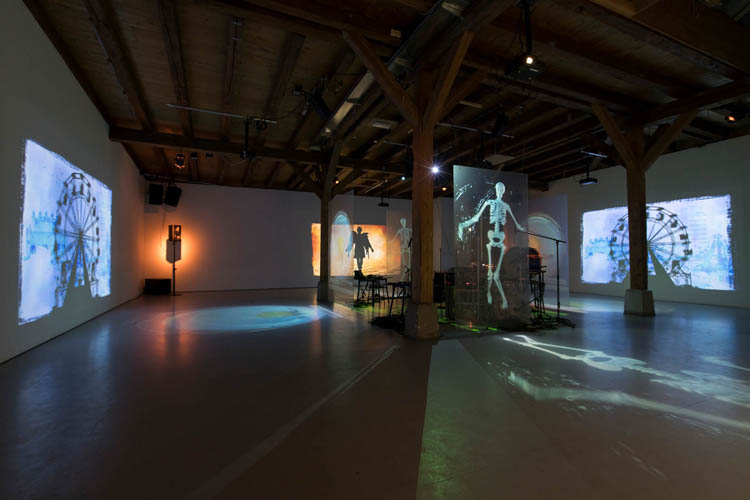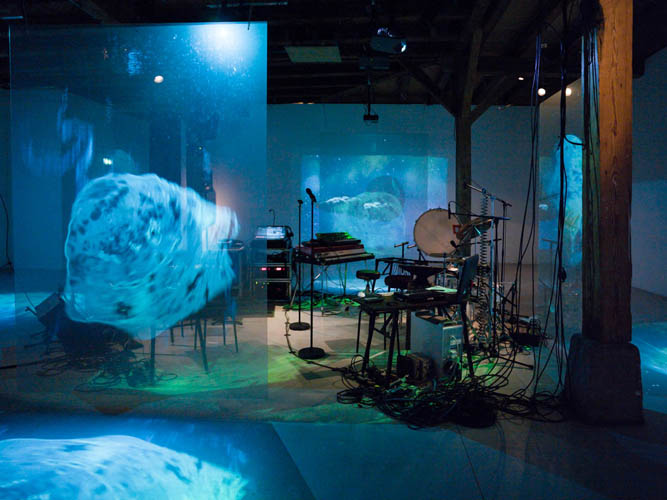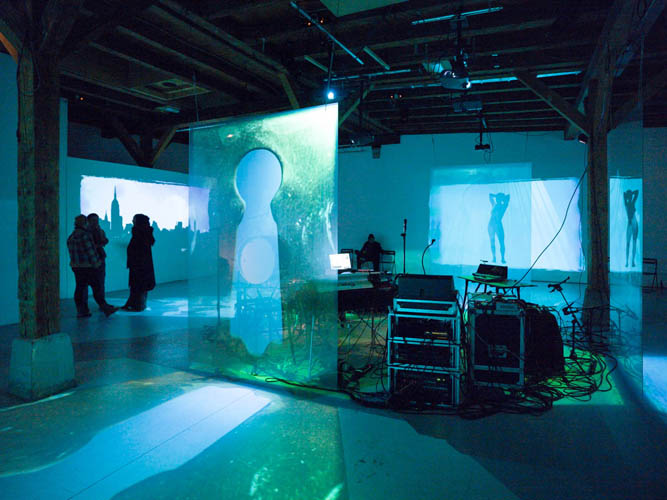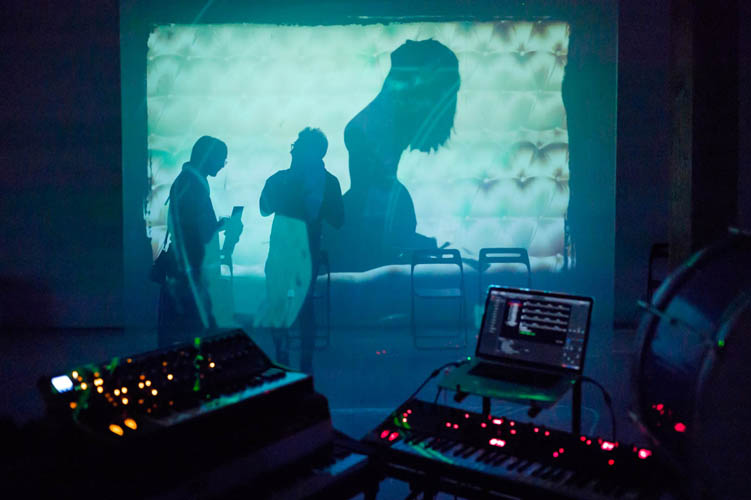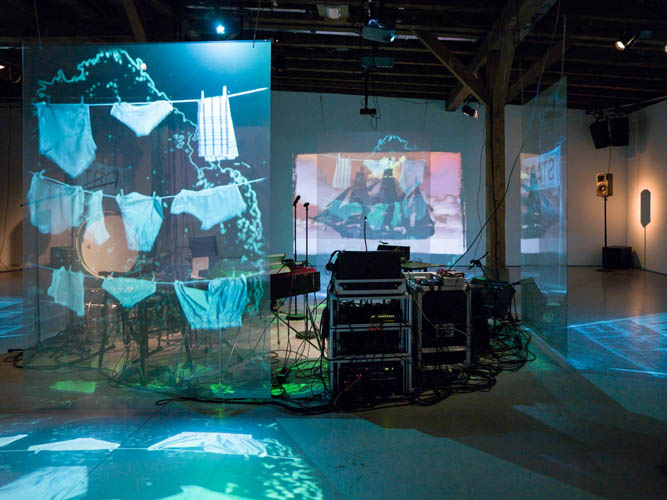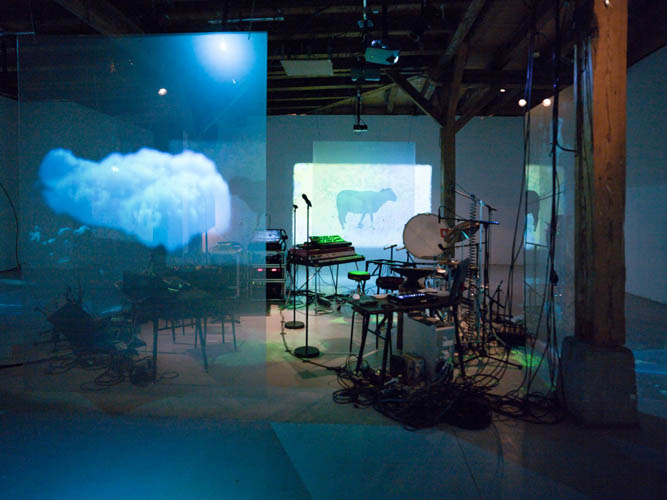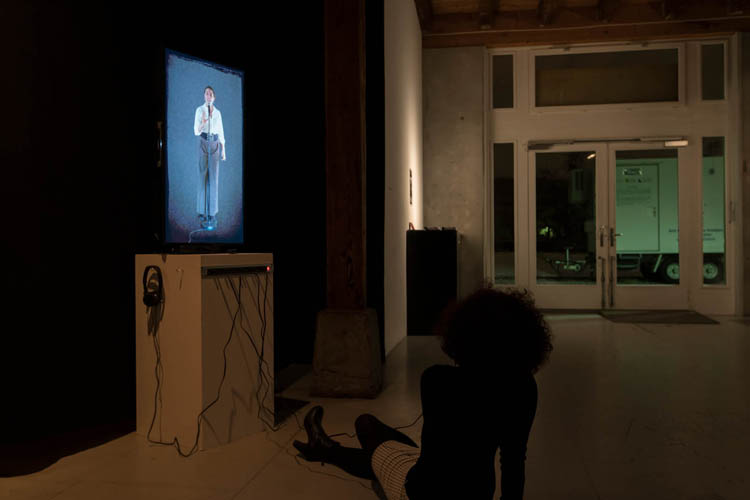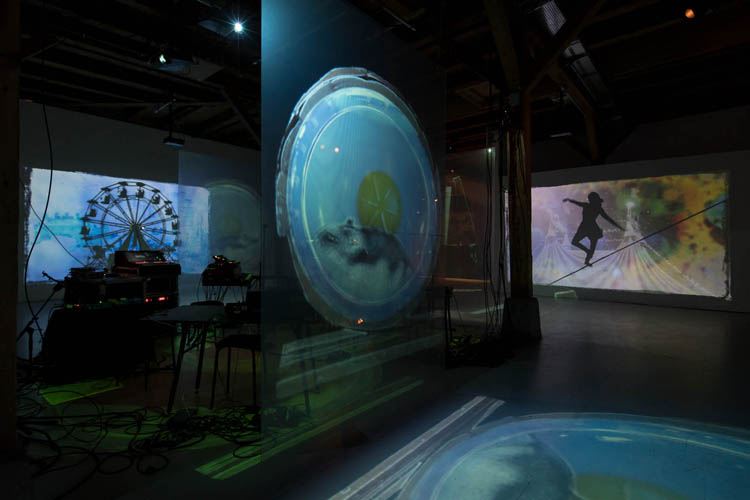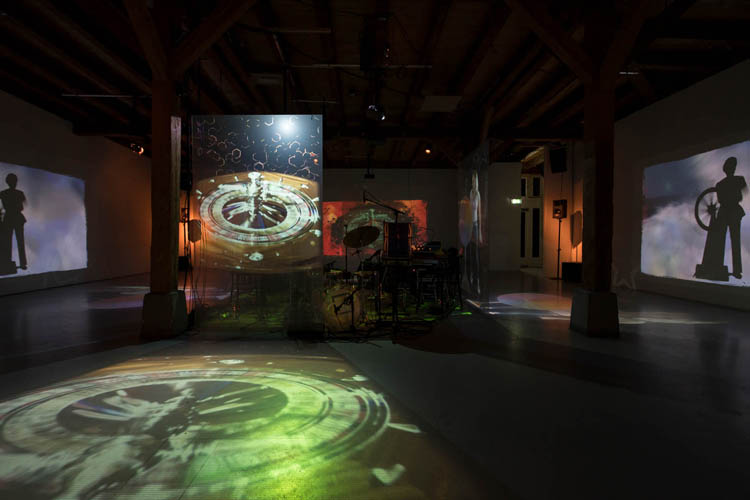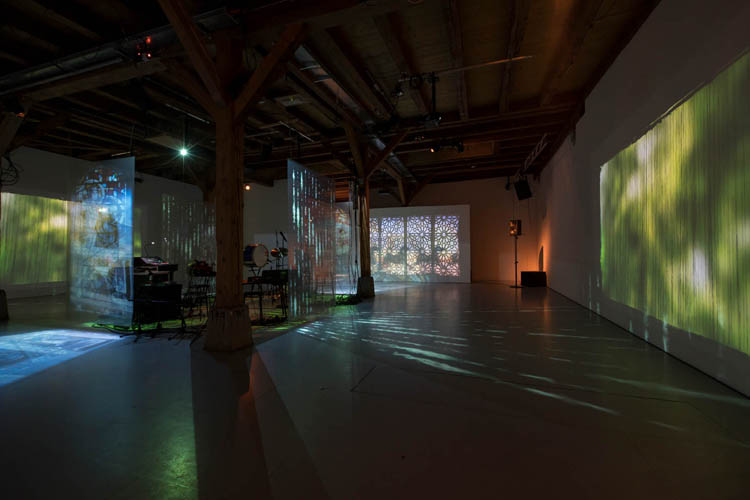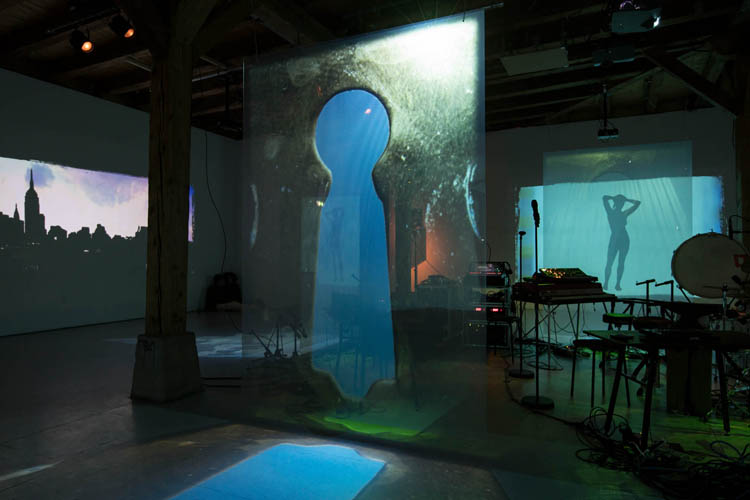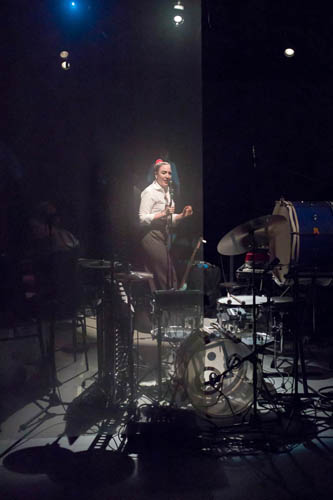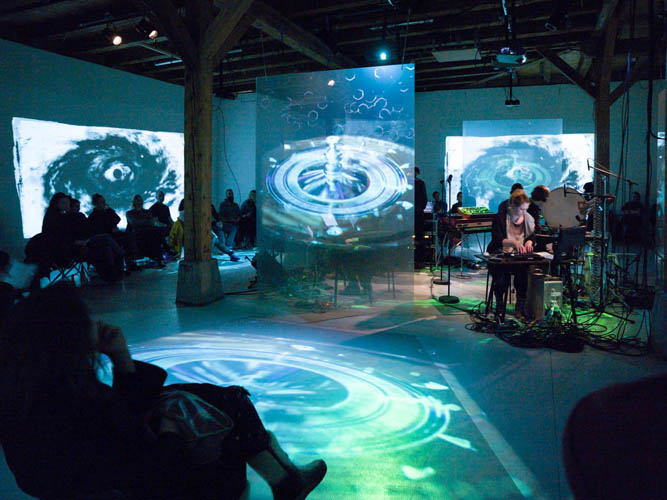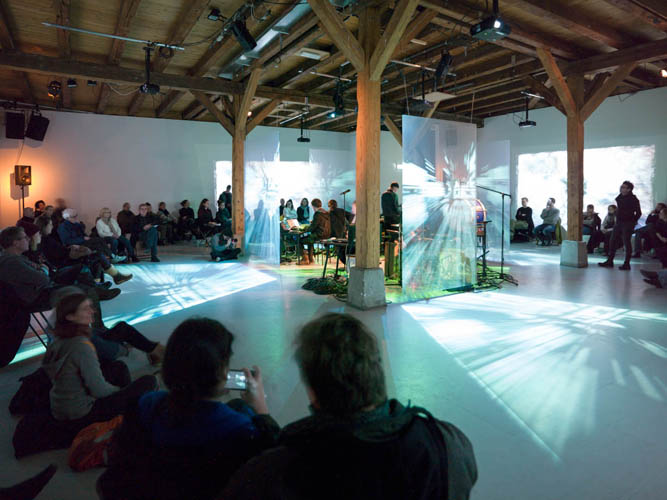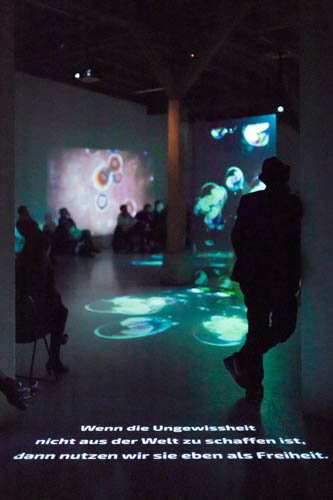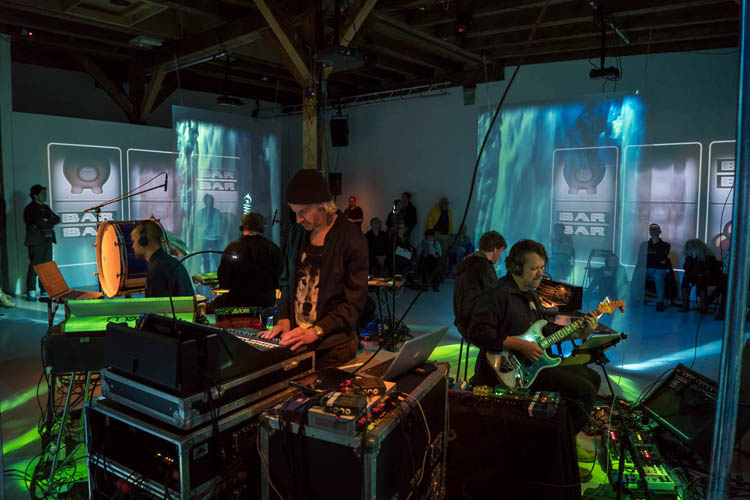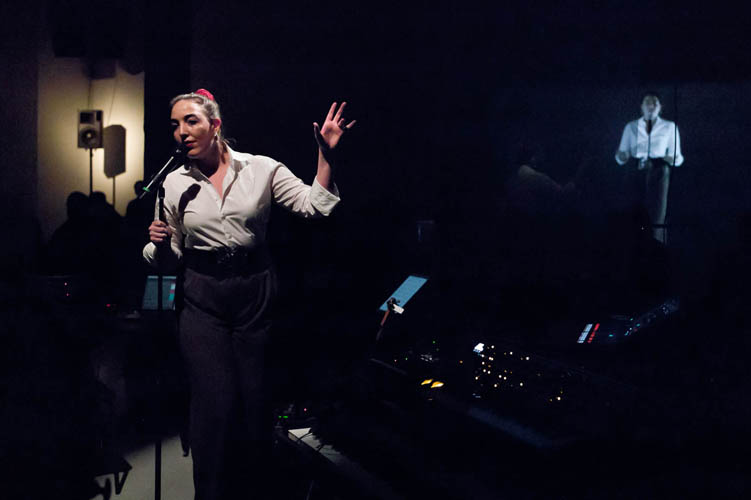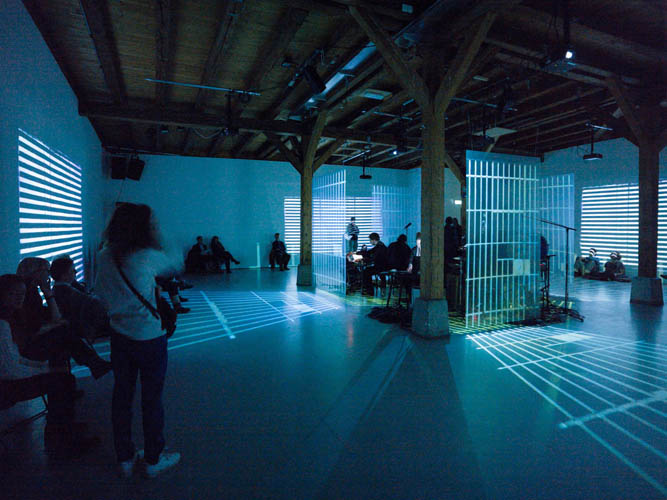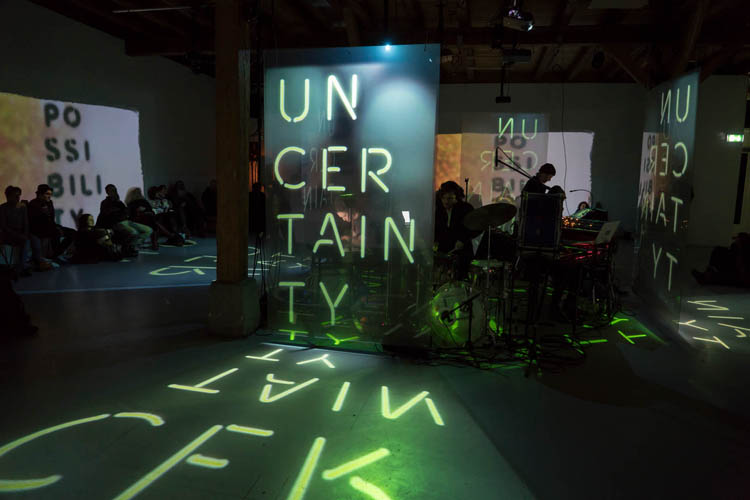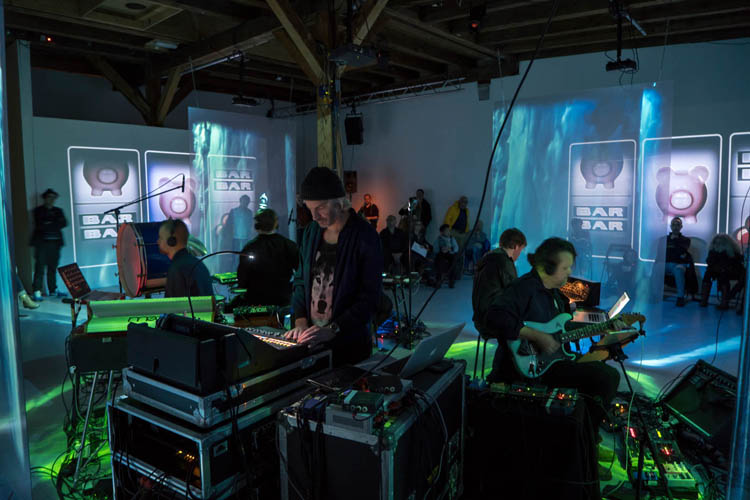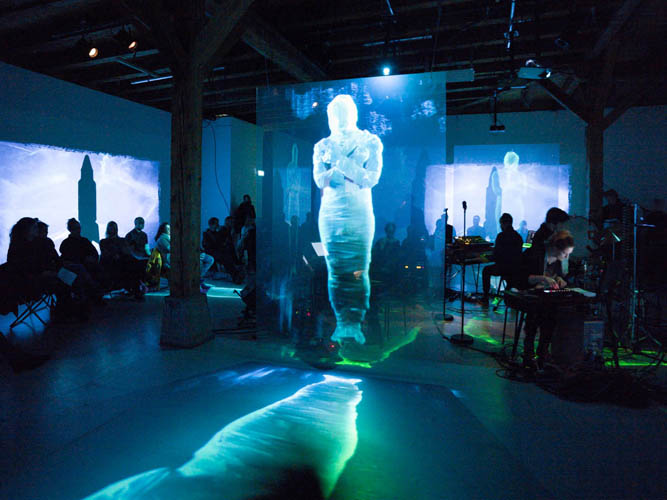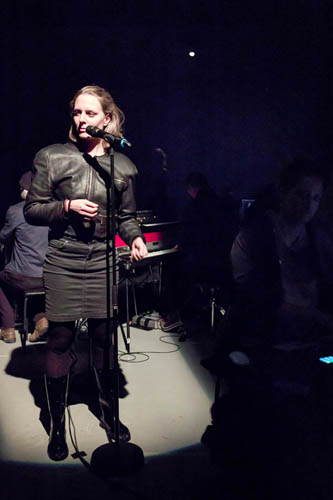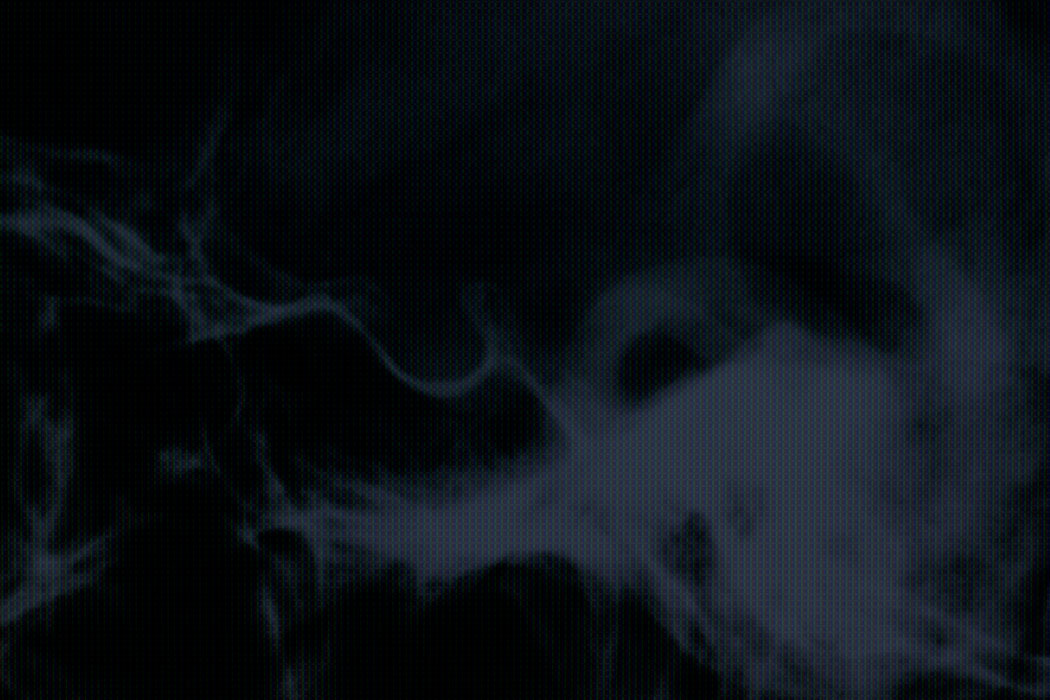PLATO’S CAVE
Sound Word Video Installation and Performance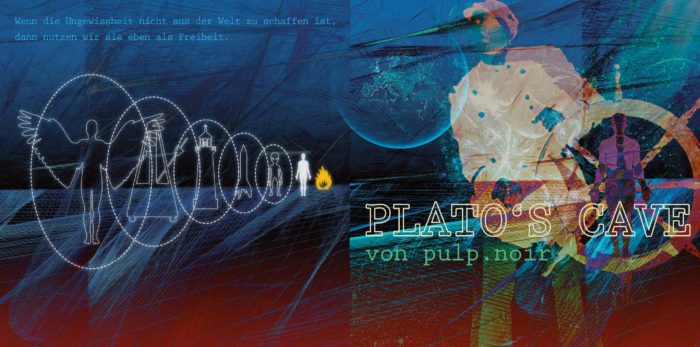
english:
The installation / performance is basically a reinterpretation of Plato’s Allegory of the Cave. But whilst Plato was shure to find eternal truth outside of the cave, we know that mankind just has to deal with the situation inside. We have to live with uncertainty. But is that really that bad? In our cave videos cast strange shadows onto the walls, speech is transformed into singing echos and everydays noises into ecstatic music. It is a very sensual world that gives us possibilites to see things in another light. When uncertainty can’t be eliminated, we might use it as freedom.voice, vocals Rahel Sternberg, Nina Salis
music, noises Tobias Reber, Fred Bürki, Eric Hunziker, Vincent Membrez,
Thomi Geiger, David Schnee
body, shadow Tanja Turpeinen, Igor Mamlenkov
video Julia Maria Morfconception, realisation Thomas Fischer
sounddesign, mix Thomas Winkler, Roman Frischknecht
deutsch:
Ungewissheit war für die westliche Welt lange Zeit kaum ein Thema mehr, aber jetzt sitzen wieder alle im gleichen Boot. Oder um es mit Platon zu sagen: in der gleichen Höhle. Denn er vergleicht die Menschen mit Höhlenbewohnern, denen ein Schattentheater vorgespielt wird, das sie irrigerweise für die Wirklichkeit halten. Gewissheit gibt’s nur draussen, wohin uns allerdings weder die Philosophie, noch die Religionen oder Naturwissenschaften je geführt haben. – Doch vielleicht ist das gar nicht so schlimm?In „Plato’s Cave“ warten die Menschen zwar vergeblich auf das Eindeutige und Beständige, aber dafür bietet ihnen die Welt aus Schatten und Echos viel Spielraum, und sinnlich ist sie auch.
Wenn die Ungewissheit nicht aus der Welt zu schaffen ist, dann nutzen wir sie eben als Freiheit.
-
PLATO’S CAVE
Sound Word Video Installation and PerformanceProject description
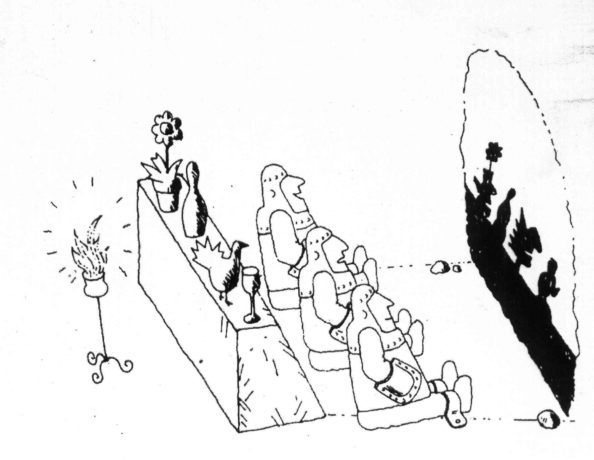
ON THE CONDITION OF INCREASING UNCERTAINTY
AND RISING TO UNDREAMT HEIGHTS IN BLIND FLIGHTSWhat has long been of little interest to the western world has now brought us back into the same boat: uncertainty. We are increasingly unsettled: Unable to lead the world’s exchange rates upwards or the flood of refugees around Europe. Disappointed about the detour our professional career takes or the youth who is not even thinking about starting one. Globalisation’s negative repercussions do no longer only hit the weak. Luckily, the effects of climate change will only hit our future generations. Gaps between entrenched ideologies are increased and dividing lines can no longer be taken for granted: not between man and woman, professional and private life or real and virtual world.
Earlier, there was a generally spread knowledge to rely on. Spread by national TV in manageable sized portions. Nowadays though, not even the infinite monopole of Google can cope with the atomisation of society. More and more information nourishes disorientation in the world. Religions have long known this and prioritised faith before knowledge. Meanwhile, there seems to be either atheism or fundamentalism to hang on to. The latter is based on a deep mistrust towards modernity that becomes more and more understandable regarding the terrific acceleration no one is able to keep up with. To the well-developed western world, however, fundamentalism seems to be a makeshift construction for the helpless, keeping up appearances and false certainties. In the long turn, fundamentalism will ruin society; at the moment, however, it sets the world in shades of fear.
Actually, both, modernity and belief in endless progress, have not only worked miracles and do not necessarily lead to happy scientologists. We are rather disappointed, or better, outraged about knowing that not only our opinions and views but even scientific measurements and statistics tend to comply with theory rather then the truth. Although we had all long had the suspicion that everything is relative, only a hundred years later Einstein finally proved it correct. Only some moments later, Heisenberg called the principle of uncertainty into play. And ever since the sixties and chaos theory, the beat of a butterfly’s wings is sufficient for the sabotage of a reliable weather forecast. In fact, this is nothing compared to the coincidence and aimlessness of our existence and the whole evolution, that came to life with Darwin a hundred and fifty years ago.
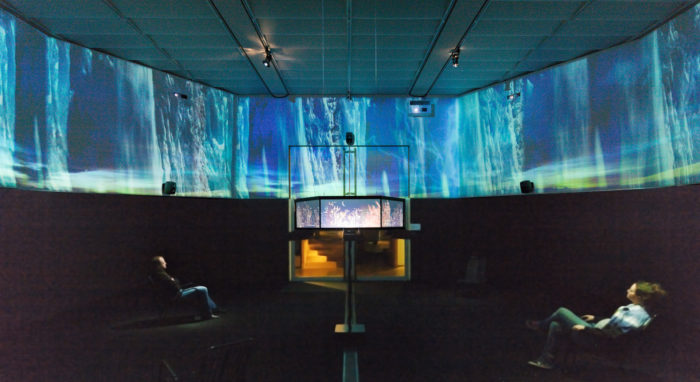
(Audio/Video-Installation „Brain in a vat“ by pulp.noir)Philosophy seems to be the key when neither God nor natural sciences help brighten up the twilight we are currently finding ourselves in. Plato had – due to philosophy – a pretty clear sight on the world. And that is two and a half thousand years ago. He claimed that our experiences were all kippers and curtains. Behind, there is reality, marked by order, not chaos, consistency, not change and unity, not diversity. In the allegory of the cave, Plato compares humans to prisoners. They find themselves in a cave, watching a shadow theatre they mistakenly take for reality. They only see the shadows of reality, never reality itself. Their perception is therefore never true. Plato assures us that there is only one way out of that cave and into the light: the way through philosophy. Unfortunately, ever since, (too) many philosophers have been right and claiming to absolute truth. It has lead to an inflation of absoluteness and the absolute has become suspicious. So there was relativity that could no longer be denied. Instead of leading to understanding and certainty, philosophy confused the people. There is nothing like a central truth, no common right or wrong, good or bad, beautiful or hideous. Humanity still has to wait for that unambiguity and clarity in life. It will never manage to get out of Plato’s cave.
We have proof now that striving for certainty is senseless and futile. Mankind has every reason to wallow in pessimism or in an even more murky nihilism. But before drowning entirely, we could simply follow suit the big thinkers of the absurd and turn the tables just like Nietzsche and Camus. That is why we claim that uncertainty is nothing negative. In contrary, life is better with less certainty and safety, and more flexibility. Anything undefined is free. The one who understands that life is a blind flight will live hazardously and rise to undreamt heights. Uncertainty does not paralyze but wing our steps. And there are more words of wisdom so that we take up the cause of full commitment and passion. Without knowing where it is going to take us. Perseverance is the fumet. Everything is relative, yet, that does not mean we should not believe in ourselves. To know that we know nothing, as Socrates said, gives us even more reasons to stay curious in life. But when we imagine the life of a refugee or the life in fear of terrorism, this becomes cynical. And yet, not stepping out of the house anymore won’t get us anywhere. Taking flight can broaden our horizons. In any case, there is no alternative to uncertainty and insecurity. Meaning that living the life to its fullest might be the key. Why is it so hard to understand? It’s the truth to be found in almost every second fortune cookie.
HOLOGRAMS AND THEIR SHADOW IMAGES
AND ECHOES MORE SONOROUS THAN THE ORIGINALAlbeit its complexity, this topic is easy to stage. The production basically shows Plato’s allegory of the cave with the visitors of the installation performing in the main role. They can only see the shadow images of reality that is taking place behind their backs. The installation, however, doesn’t show shadows but video pictures
being projected on the wall. They show a cross-section of our world as it is. The idea is to produce collages of videos and cut out the main motives right away: people, animals and objects appear as black silhouettes of themselves. In Plato’s cave, the silhouettes originate from figures that themselves seem to be copies of reality, being illuminated like in a shadow theatre. Instead of figures, the installation will use panes of Plexiglas to show the different motives cut out of the video. They’ll float freely in the room like holograms, pairing with their respective shadow image on the wall. Depending on the room size there will be up to five pairs. We’ll therefore produce five different, doubled video sequences, each of about 3 minutes of length. We’ll partly film the material ourselves and partly take it from found footage. The visitors will move through a 3D collage of images and their respective images. When leaving the installation, they’ll most likely be blinded by daylight first, but will then see everything much clearer. But appearances are deceptive: Whatever they see and take as reality on the outside, humans, animals and objects, they’re all only images on their retina.What’s real and what’s illusionary? Can a hologram, being nothing but a reflection, cast a shadow? Is this reality? And, what is reality? Are the shadows on the wall reality? And what about the holograms in the room? Or the actors in the video? Or the figures they’re interpreting? Or is the sheer idea of such figures reality? What is real and what not is hard to say, because our perception is entirely subjective. We never know what the other is seeing in something. Shadows are a metaphor: gaps to read something into. We see what we want to see. And everyone sees something else. Ambiguity and subjectivity are – contrary to Plato’s allegory – not seen as something negative. Just like the unconscious, the hidden, the unknown or the unfamiliar that the shadow potentially stands for. The shadow doesn’t mean something eerie or threatening, but leaves space to reflect and fantasize. On the other side, there are the realistic images on the holo screens that have little to do with mystery. After all, they offer interesting details left to discover. Confronting both versions symbolises both the span of our perception and their equal co-existence. Just because something looks more realistic, doesn’t mean it’s more likely to be true.
The same thing happens at an acoustic level, where different versions of reality are contrasted and a natural sound pairs with its synthetic echo. Means, that a specific foley is confronted with a musical sound and a spoken with a chanted word. For example, there is a bleating sheep on one side of the room and an equivalent tone from a saxophone on the other. Or again the sound of a typewriter is echoed by a percussion solo. The simultaneity of different sound versions, a concrete and a stylized, offers a confusing stereo image: Is it a sound or music? Speech or a chant? Prose or poetry? Back in Plato’s time already, people used to play off such pairs against each other. In his eyes, music, chant and poetry had nothing to do with the truth, but with theatre and myths by Homer. In philosophy, factual prose and dialectal thinking won over sounds and lyrics. That’s a discussion which is taking place in arts in general. Over and over. Whenever documentary and fiction or realism and symbolism are hostile to each other. This installation wants to depict both parties and gives the last word to Nietzsche: In his eyes, art must lie in order to encourage the humans to a life without pessimism, to a life in full swing.
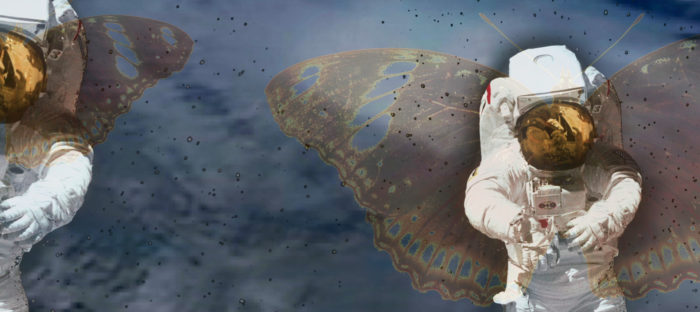
(Videostill from „Brain in a vat“ by pulp.noir)The prevailing mood is neither dark nor heavy. We imagine a sound and visual world that refers to things as volatile and body-less like shadows and echoes. Clouds, too, their weightlessness and variability, stand as a metaphor. So there is a 15 minutes audio loop on the basis of a floating ambient/minimal soundtrack with foleys, sounds and voices appearing and disappearing smoothly. And when the three different audio signals are allocated to three different tracks, ideally spread via three pairs of loudspeakers and two subwoofers, there will be a kaleidoscopic sound space that supports the mood we’re aiming at. The acoustic level builds a unity with the likewise kaleidoscopic video projections. Nevertheless, the sound never sets the images to music, it stays independent all the time. The metamorphosis, the compositional principle, is strongly linked to both levels without being completely connected: On video, for example, a hamster wheel can turn into a large ferris wheel or the rotating earth ball turns out to be a floating hot air balloon. And on the acoustic level, the teller of a fairytale suddenly tells a war bulletin or a harmless quiz show turns into a police interrogation. That’s not actually amusing and many of the metamorphoses will make people think but the many surprises will make up for this.
Ideally, nothing is foreseeable. Everything is floating and the visitors can hardly steady themselves. This very condition goes well with the condition of accelerated changes we’re finding ourselves in today. And also the flood of information and the increasing lack of oversight, massively disturbing us, are based on the mass and variety of images and sounds chosen for those numerous metamorphoses and pairs in this installation. For centuries after Plato, it had been said that there was no truth in varied and variable things. For the truth was something absolute and eternal and therefore unchangeable. Anything else would lead to dissent and relativity. It was thus important to get the hang of the varied and variable things by means of charts, simplifications, demarcations and hierarchies. But with our every day experiences and modern science telling us that chaos and uncertainty are growing steadily and because this installation is following the thinking of the absurd, it gives itself over to the thrill caused by variability and change. Order, unity and clarity aren’t foreseen in the installation. But the unknown, uncontrolled and unpredictable will be fully exhausted. When uncertainty can’t be eliminated, let’s use it as freedom.
-
installation:
performance:
-
INSTALLATION:
PERFORMANCE:
-
pulp.noir
pulp.noir was formed in 2004 by composer Thomas Fischer and video artist Julia Morf, and has since then been discovering the absurdity of life. Bending the borders between art, music and theatre, projects by pulp.noir usually include scenic, installative and performative components and are shown to a very wide audience interested in theatre, arts, music and film.
Bizarre and surreal chains of associations involving text, scenes, video and sound elements are crucial to every of pulp.noir’s projects. Although following a composed structure, the arrangements are improvisational and interactive.
WorksART INSTALLATIOS
PLATO’S CAVE
SoundWortVideo Installation und PerformanceZürich, Kunstraum Walcheturm, 2017
Brain in a vat
Im Rahmen der Ausstellung „Kosmos, Rätsel der Menschheit“Zürich, Museum Rietberg, 2014/2015
Beam me up
Im Rahmen der Gruppenausstellung „Gastspiel – Schweizer Gegenwartskunst im
Museum Rietberg“Zürich, Museum Rietberg, 2014
Matchcuts
Digitale Collagen
www.matchcuts.chZürich, Perla Mode/Message Salon, 2012
Zug, Kunstpause, 2012
THEATER PERFORMANCESHegels Ferien
Simultanstück im Rahmen der Kurzstückplattform “Inkubator”Zürich, Fabriktheater Rote Fabrik, 2016
Silly Works
Eine Theaterautomation zum Theam: “Ist die Arbeit die Mühe wert?”Zürich, Fabriktheater Rote Fabrik, Oktober 2015
Zürich, ZHdK, Oktober 2016Signal to Noise
Eine Theatersimulation – über Information und WissenZürich, Fabriktheater Rote Fabrik, 2014 / Bern, Tojo Theater, 2014 / Zürich, Restspiele, 2014 Basel, Theater Roxy, 2014
Dead Sync
One small step for a man, one giant leap for mankindZürich, Kunstraum Walcheturm, 2008 / Bern, Progr, 2009 / St. Gallen, Lokremise, 2009
Bad Blood
Variationen des BanalenZürich, Kunstraum Walcheturm, 2007 / Baden, Brennpunkt, 2007 / Zug, Chollerhalle, 2007 München, Pathos Transport Theater, 2008 / Erlangen, ARENA-Festival, 2008
ARENA-Jurypreis Gewinner 2008
Jitterbug
Larve, Puppe, ImagoAarau, Festival Kunstexpander, 2006 / Zürich, Blauer Saal, 2006
PREMIO-Gewinner 2006
Deacon Blues
Oder: Die Kunst, glücklich zu seinZürich, Blauer Saal, 2005
Remix Kafka
Fragmente eines KünstlersZürich, Theater am Hechtplatz, 2004
FILM REMIXESA Clockwork Orange
von Stanley KubrickZürich, EWZ Stattkino Festival, 2014
Brazil
von Terry GilliamZürich, EWZ Stattkino Festival, 2013 / Zürich, Best-of EWZ Stattkino Festival, 2014
Kassel, Dokfest, 2014 / Wiesbaden, Exground Filmfest, 2014
LIVE VIDEOCLIPSiscapes 3 – Big Band
Baden, Stanzerei, 2012 / Kassel, Dokfest, 2012 / St. Gallen KinoK, 2012
Winterthur, Theater am Gleis, 2012 / Bern, Tojo Theater, 2013 / Luzern, Fumetto Festival, 2013
Zürich, Videoex Festival, 2013 / Aarau, One Minute Film- und Video Festival, 2013
Basel, Clair-Obscur Festival, 2013isapes 2 – Live Show
Basel, Festival Clair-Obscur, 2010 / Zürich, Kunstraum Walcheturm, 2010
Olten, Coq d’Or, 2010 / Baden, Stanzerei, 2011 / Luzern, Gewerbehalle, 2011
Wien, The Loft, 2011 / Linz, Oxymoron, 2011 / Kassel, ARM, 2011
Liverpool, The Kazimier, 2011, Biel, Etage Club, 2011 / Zürich, Restspiele Festival, 2012iscapes 1 – Weird Tales
Zürich, Jazzclub Moods, 2009 / Zürich, Galerie Visual Drugs, 2009, Bern, ONO, 2009
Basel Festival Clair-Obscur, 2009 / Boswil, Alte Kirche, 2009 / Olten, Coq d’Or, 2009www.iscapes.ch
OTHER PROJECTSComic zu Beam me up
Beitrag zum Buch „Das Fremde ist nur in der Fremde fremd“ zur Ausstellung
„Gastspiel – Schweizer Gegenwartskunst im Museum Rietberg“,
Edition Patrick Frey, No 155, 2014Filmmusik zu Trapped
Für den Film-Soundtrack TRAPPED (2012), produziert mit der Gruppe pulp.noir, wurde Thomas Fischer der SUISA-Filmmusikpreis 2013 verliehen.
